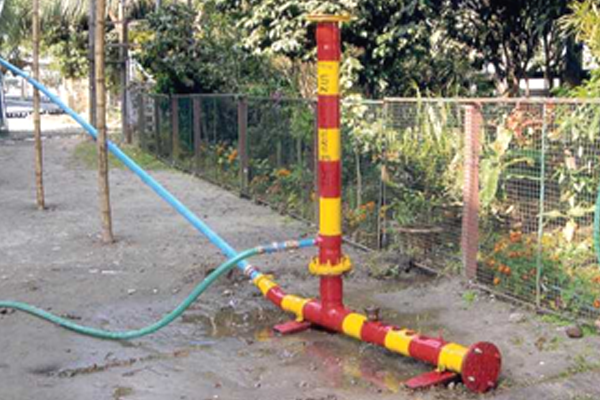Surface water resources are being utilized through irrigation tanks, storage, permanent and temporary diversions. Water of these detention storage reservoirs & Perennial sources are utilized for irrigation during the period of no rain. A small portion of surface water run off of each watershed is being utilized yet.
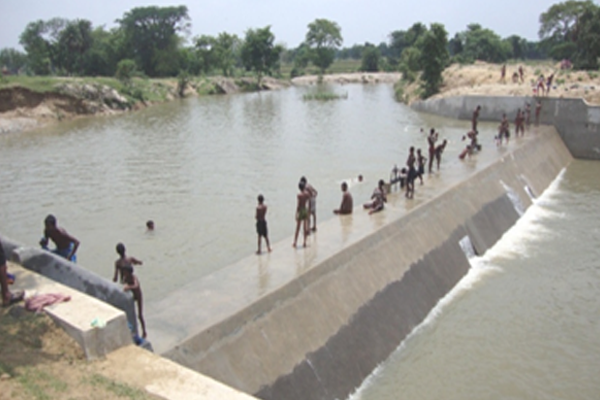
These schemes use rainwater for irrigation purposes either by storing it or by diverting it from a stream, nala or river. Sometimes, permanent diversions are constructed for utilizing the flowing water of a stream or river. Temporary diversions are also constructed in many areas which are usually washed away during the rainy season.
These schemes aim at providing gravity flow irrigation by mere diversion of stream water supply without creating any storage. An obstruction (weir) constructed across the stream for raising and diverting water through the artificial channel.
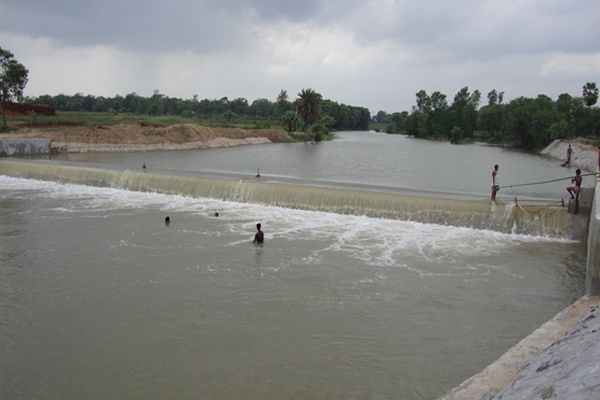
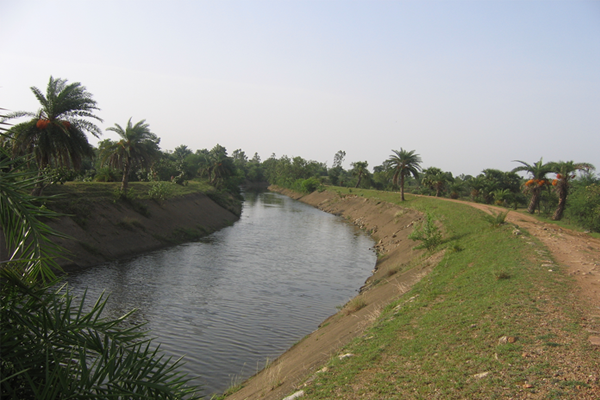
These schemes are constructed mainly to drain water from low-lying areas which are water-logged due to tidal action of river. Reversal flow of water of the river enters into and inundates the agriculture. To control the entry of water, a sluice gate is constructed at the outlet of the natural drainage channel of the area. By way of construction of this type of scheme two-fold facilities namely (i) drainage and (ii) irrigation are obtained. According to the requirement of water for irrigation during Rabi / Boro season, a portion of water is preserved in the existing channel instead of draining it out.
Water Resources Development Directorate have implemented Surface Flow Minor Irrigation Schemes in the Districts of Hooghly using treated effluents of Tribeni Tissue Factory and Bandel Thermal Power Station benefiting 50 ha. and 120 ha. irrigation area respectively in the adjoining cultivable area of those locations instead of discharging back to the river.

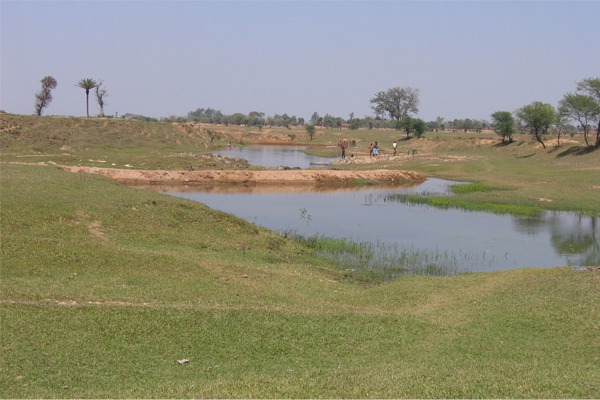
Boro Bundh Schemes are taken up in some low-lying areas of Midnapore, Hooghly, and Howrah districts where no cultivation is possible during rainy season and topography and characteristics of the river do not permit to construct a permanent storage work. These schemes are temporary in nature. Earthen bundhs are constructed across the river in the month Oct-Nov every year to harvest water for utilization in boro crops. Before on-set of the monsoon these bundhs are removed to restore the natural water way.
In regions where the topography does not permit direct flow irrigation from rivers and streams, water has to be lifted into the irrigation channels. These works are similar to diversion schemes, but in addition pumps are installed and pump houses constructed.
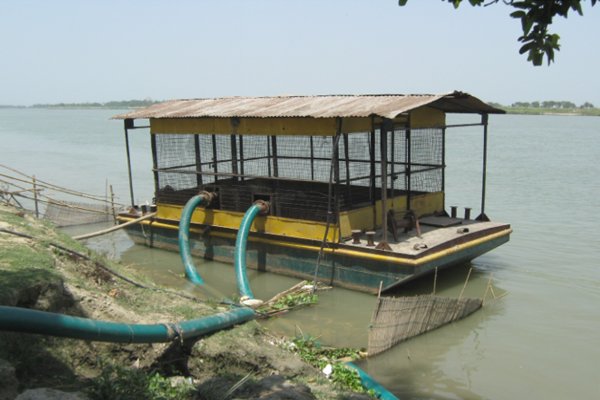
River lift irrigation Schemes are installed where topography of land does not permit to construct storage of diversion works with gravity flow irrigation schemes. Water is lifted from the river with the help of either by two number diesel engine pump-sets or two number electric driven pump-motor sets and delivered to field through underground pipe line net work. The schemes may be categorized as below :
Water from River, Canals, Beels etc. is lifted by two pump sets each capable of discharging 200 cubic meter per hour ie. total 400 cubic meter per hour to irrigate and area of 60-80 hectares of land. Water is distributed through under ground pipe line emanating from two distribution chambers which may either be independently connected with the pump sets or may be interlinked depending upon shape and size of command area.
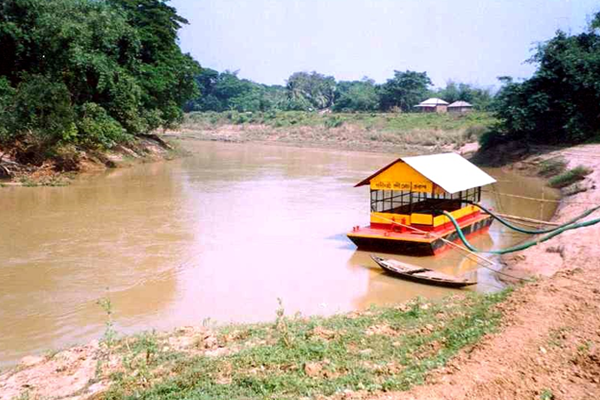

Water from River, Canals, Beels etc. is lifted by two pump sets each capable of discharging 100 cubic meter per hour ie. total 200 cubic meter per hour to irrigate and area of 40 hectares of land. Water is distributed through under ground pipe line emanating from two distribution chambers which may either be independently connected with the pump sets or may be interlinked depending upon shape and size of command area.
Water from River, Canals, Beels etc. is lifted by two pump sets each capable of discharging 50 cubic meter per hour ie. total 100 cubic meter per hour to irrigate and area of 20 hectares of land. Water is distributed through under ground pipe line emanating from two distribution chambers which may either be independently connected with the pump sets or may be interlinked depending upon shape and size of command area. In all the schemes it is possible to have cropping intensity of 200%.

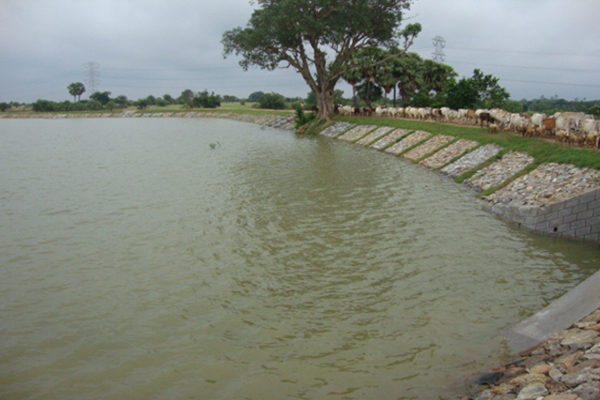
Rain Water Harvesting are being done by excavating top soil and part of weathered mantle down to a shallow depth below ground level, creating a reservoir for storage of rain water as surface resources and simultaneously enriching soil moisture as well as sub-surface resources with natural percolation. Re-excavation of old tanks are made to augment their capacities for harvesting rain water during monsoon and for subsequent utilization of the same in irrigation during dry seasons. Re-excavation also augments recharge to the water basin thereby increasing availability of ground water.
An automatic device with which the energy of a quantity of water from a low head is used to lift proportionate quantity of this water to a greater height. This works on the principle of water hammer. In hilly areas use of hydram has been proposed considering steep gradient and high velocity of the streams.
